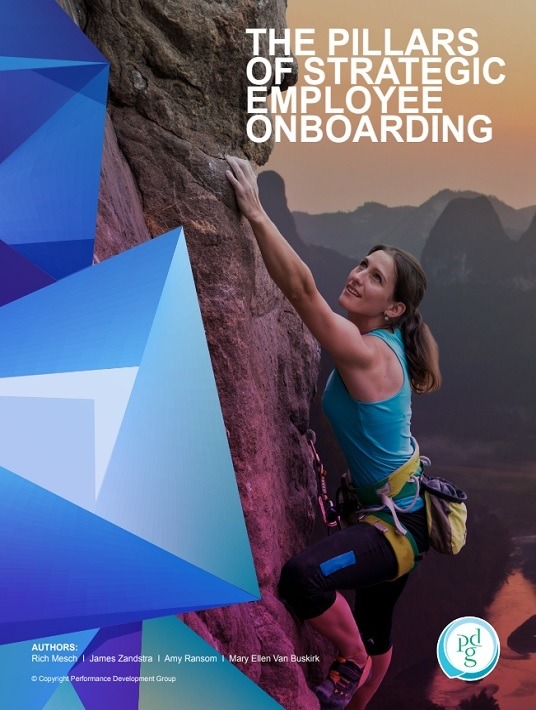How To Offer Your Employees Lifelong Learning Opportunities
While onboarding represents an employee’s introduction to an organization, lifelong learning serves as an organization’s ongoing and concerted commitment to the personal growth of their employees and a determination to help them tap into their full potential. Despite the benefits, lifelong learning initiatives for employees can be challenging and are frequently overlooked or set aside amid the daily demands of the workplace.
However, organizations that embrace lifelong learning go beyond traditional employee orientation to create a holistic journey that encourages self-reflection and training throughout a team member’s career path. When done right, organizations create more engaged and satisfied employees who also are more productive in their duties. These organizations not only keep their workers—they attract others drawn to a workplace with a reputation for developing the talents of their staff.

5 Keys To A Productive Approach To Lifelong Learning For Your Workforce
1. Provide Consistent Opportunities
Developing your team members means ensuring that they feel that they always have a chance to improve. It should be an easy and natural part of their job, baked into every staff member’s responsibilities. Workplaces that do not create space for their staff members to pursue growth and learning as part of their job responsibilities risk creating a static workforce—one unable to grow and develop in ways that boost both their employees’ careers and the organization’s fortunes.
Organizations can take a highly proactive role in creating learning opportunities for their team members. For example, launching certification paths give employees concrete and detailed avenues to pursue measurable, structured growth. There are always new skills to acquire and new ways to do a job better, and you will want your employees to know them all. Emphasizing both reskilling (training an employee for a new role within the organization) and upskilling (teaching an employee new skills within their current role) ensures that team members throughout your organization receive an array of growth opportunities, no matter their career path.
2. Make A Plan
Lifelong learning for an entire team and its individual members should follow a purposeful plan. For teams, learning efforts should align with overall organizational goals. A focus on new technology and trends relevant to your field, for instance, will help to ensure that your team is never letting new best practices pass them by. For individuals, learning objectives should align closely with performance goals.
Learning plans should emphasize not only the lesson content, but also delivery methods and applications. An organization will need to be able to evaluate the big picture and consider both current training needs and what they might look like in the future.
3. Make It Personal
Organizations should be wary of one-size-fits-all approaches to learning for their workforce. Whenever possible, a personal approach to lifelong learning is best. Making learning personal means making it flexible and adaptable to each team member’s needs and preferences. Personalized lifelong learning opportunities greatly increase the chance that team members will embrace training opportunities and feel connected to the organization. It also helps prevent “dead time” when employees sit through redundant training or courses that have no connection to their work or goals.
In addition to adaptability, personalized learning should focus on topics most relevant to each individual worker. Employing tech-based solutions helps deliver training tailored to workers so they can access training resources at a time and pace most convenient for them. However, relying too much on tech-based solutions means removing the advantages of the human connection in learning. Mentorships and coaching allow for open discussions, probing questions, empathy, networking, and anecdotal lessons that technology cannot replicate.
4. Make It Productive
Lifelong learning does not need to be separate from the work that team members do. Workers who can apply new skills and knowledge to their jobs learn more effectively and deeply. Interactive, on-the-job application reinforces lessons, make them less abstract and more concrete, and eliminate boundaries between learning about a job and doing it.
Organizations that understand learning is part of the job and not apart from it will inspire personal growth in their team members. Learning will not feel like extra work that requires team members to step outside their responsibilities with this approach.
For learning to be productive, it needs to encompass larger lessons that broaden team members’ expertise and understanding and more specific skills that allow them to do their jobs more efficiently. For instance, microlearning keeps learning efforts focused on narrow topics, allowing for targeted growth in specific areas. This can be particularly helpful in creating practical learning steps that yield distinct improvements for individual employees over the short and long term.
5. Measure Progress
There is no reason to leave the impact of your employees’ learning opportunities up to vague assumptions. Data is crucial in determining how well your team members learn and evaluating possible improvements. It can bolster feedback, making it richer and more objective.
Organizations should seek ways to identify and analyze how well staff translates learning into their work. Provide self-knowledge checks so that employees can gauge how well they’re learning and where knowledge gaps still exist. This prevents ineffective learning practices from continuing and allows for revisions and refinements to improve them. The more routine the measurement, the more effective it is and the more likely to inform staff and supervisors of opportunities and challenges.
Conclusion
Too often, learning and training resources in organizations are tilted heavily toward new staff members and new promotions. In these workplaces, team members can go long stretches without encountering any personalized, meaningful learning opportunities.
An organization that puts lifelong learning at the forefront of its workforce training efforts will build a team that can forever grow and progress, become more productive and engaged, and feel more rewarded and satisfied in their careers.
Download the eBook The Pillars Of Strategic Employee Onboarding for insider secrets to launching a new hire training program that's adaptive, personalized, and perfectly suited for your modern workforce. Also, join the webinar to discover how onboarding drives business success!









